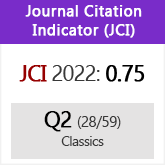Julian and the Consulship: Politics and Representation
DOI:
https://doi.org/10.3989/emerita.2021.13.2031Keywords:
Emperor Julian, political thought, consulship, consular speeches, imperial representation, Claudius Mamertinus, LibaniusAbstract
This article is a comprehensive study of the meaning of consulship in the writings and political activity of Emperor Julian (331-363 AD). The consulship was probably the only Roman institution deemed worthy of recognition by the philo-Hellenic ruler. In the Panegyric in Honour of Empress Eusebia, Julian ponders the excellence of the Republican consulship as a form of government that could put an end to the excesses of tyranny, an issue that Claudius Mamertinus and Libanius echo in their consular speeches addressed to him. Being Augustus, Julian was inspired by the ancient consular ceremonies of Republican times to banish the symbols of the Constantinian monarchy and promote the symbolic value of the consulship to encourage the troops marching towards Persia.
Downloads
References
Angiolani, S. (2008): Elogio dell'imperatrice Eusebia (Orazione II), Naples.
Arce, J. (1984): Estudios sobre el emperador F. Cl. Juliano, Madrid.
Athanassiadi-Fowden, P. (1981): Julian and Hellenism: An Intellectual Biography, Oxford.
Bagnall, R. S., Cameron, A., Schwartz S. R. & Worp, K. A. (1987): Consuls of the Later Roman Empire, Atlanta.
Barnes, T. D. (1992): «Augustine, Symmachus and Ambrose», in McWilliam, J. (ed.), Augustine: From Rhetor to Theologian, Ontario, pp. 7-13 (reprinted in Barnes, T. D. 1994: From Eusebius to Augustine. Selected papers 1982-1993, Brookfield).
Bidez, J. (1930): La vie de l'empereur Julien, Paris.
Bidez, J. (1932): L'empereur Julien. Oeuvres complètes, I-1re partie. Discours de Julien César), Paris.
Bouffartigue, J. (1978): «Julien par Julien», in Braun, R. & Richer, J. (eds.), L'empereur Julien. De l'histoire à la légende (331-1715), Paris, pp. 15-30.
Bouffartigue, J. (1992): L'empereur Julien et la culture de son temps, Paris.
Bowersock, G. W. (1997): Julian the Apostate, Cambridge (MA).
Brown, P. (1992): Power and Persuasion in Late Antiquity: Towards a Christian Empire, Madison.
Browning, R. (1975): The Emperor Julian, London.
Candau Morón, J. M. (1986): «La filosofía política de Juliano», Habis 17, pp. 87-96.
Cecconi, G. A. (2007): «Lineamenti di storia del consolato tardoantico», in David, M. (ed.), Eburnea diptycha, Bari, pp. 109-127.
Chastagnol, A. (1958): «Observations sur le consulat suffect et la préture du Bas-Empire», in Revue Historique 219 (2), pp. 221-253.
De Trizio, M. S. (2009): Panegirico di Mamertino per Massimiano e Diocleziano, Panegyrici Latini 2 [10], Bari.
Den Boeft, J., Den Hengst, D. & Teitler, H. C. (1991): Philological and Historical Commentary on Ammianus Marcellinus XXI, Groningen.
Den Boeft, J., Drijvers J.W., Den Hengst, D. & Teitler, H. C. (1998): Philological and Historical Commentary on Ammianus Marcellinus XXIII, Groningen.
Den Hengst, D., (2010): «The Romanization of Julian», in Burgersdijk, D. W. P., van Waarden, J. A. & Den Hengst, D. (eds.), Emperors and Historiography: Collected Essays on the Literature of the Roman Empire, Leiden, pp. 219-229 (originally published in 1986, Mnemosyne Supplements 39, pp. 136-141).
Elm, S. (2012): Sons of Hellenism, Fathers of the Church: Emperor Julian, Gregory of Nazianzen and the vision of Rome, Berkeley.
Förster, R. (1904): Libanius, Opera, II. Orationes XII-XXV, Leipzig.
Galletier, E. (1955): Panégyriques Latins, vol. 3, Paris.
García Ruiz, M. P. (2006): Claudio Mamertino Panegírico (gratiarum actio) al emperador Juliano, Pamplona.
García Ruiz, M. P. (2008): «La evolución de la imagen política del emperador Juliano a través de los discursos consulares: Mamertino, Pan. III [11] y Libanio, Or. XII», Minerva 21, pp. 137-153.
García Ruiz, M. P. (2015): «Una lectura conjunta del primer Encomio a Constancio y el Encomio a Eusebia de Juliano», Exemplaria Classica. Journal of Classical Philology 19, pp. 5-23. https://doi.org/10.33776/ec.v19i0.2647
Geffcken, J. (1914): Kaiser Julianus, Das Erbe der Alten 8, Leipzig.
Gleason, M. W. (1986): «Julian's Misopogon and the New Year at Antioch», Journal of Roman Studies 76, pp. 106-119. https://doi.org/10.2307/300368
Grabar, A. (1936): L'empereur dans l'art byzantin, Paris.
Guidetti, F. (2015): «I ritratti dell' imperatore Giuliano», in Marcone, A. (ed.), L'imperatore Giuliano: Realtà storica e rappresentazione, Florence, pp. 12-49.
Hidalgo de la Vega, M.ª J. (1995): El intelectual, la realeza y el poder político en el imperio romano, Salamanca.
Hidalgo de la Vega, M.ª J. (1997): «Helenismo y basileia en Juliano», in Plácido, D., Alvar, J., Casillas, J. M. & Fornis, C. (eds.), Imágenes de la polis, Madrid, pp. 317-353.
Kübler, B. (1900): RE IV.1. s. u. consul, III, 1133-1138.
James, L. (2012): «Is There an Empress in the Text? Julian's Speech of Thanks to Eusebia», en Baker-Brian, N. & Tougher, S. (eds.), Emperor and Author. The Writings of Julian the Apostate, Swansea, pp. 47-59. https://doi.org/10.2307/j.ctvvn9n9.10
Jussen, D. (2021): «Following the Footsteps of Trajan: A Note on Traditional Emperorship in Late Fourth-Century Panegyric», CPh 116, pp.125-134. https://doi.org/10.1086/711888
Lana, I. (1972): «Civilis, civiliter, civilitas in Tacito e in Suetonio. Contributo alla storia del lessico politico-romano nell' età imperial», Atti Accademia di Scienze di Torino 106, pp. 476-487.
Martínez Lacy, R. (2005): «La constitución mixta de Polibio como modelo político», Studia historica. Historia antigua 23, pp. 373-383.
Mas Torres, S. (2006): Pensamiento romano: una historia de la filosofía en Roma, Valencia.
Neri, V. (1984): Costanzo, Giuliano e l'ideale del civilis princeps nelle Storie di Ammiano Marcellino, Rome.
Nixon, C. E. V. & Rodgers, B. S. (1994): In Praise of Later Roman Emperors. The Panegyrici Latini, introduction, translation and historical commentary, with the Latin text of R.A.B. Mynors, Berkeley. https://doi.org/10.1525/9780520342828
Norman, A. F. (1969): Libanius, Selected works. Cambridge (MA).
Pisapia, A. (1997): «La 'civilitas' del principe: Considerazioni su una nozione politico-giuridica antica», Scienza & politica 17, pp. 87-102.
PLRE: Jones, A. H. M., Martindale, J. R. & Morris, J. (1971-1992): The Prosopography of the Later Roman Empire, vols. I-III, Cambridge.
Raeder, A. (1932): Julian den Frafaldne, Oslo.
Redondo Moyano, E. (2018): «La construcción de una identidad política: La carta de Juliano el Apóstata Al Senado y al pueblo de Atenas», Ítaca. Quaderns Catalans de Cultura Clàssica 34, pp. 147-171.
Rees, R. (2002): Layers of Loyalty in Latin Panegyric, A.D. 289-307, Oxford. https://doi.org/10.1093/acprof:oso/9780199249183.001.0001
Ritoré Ponce, J. (2002): «La clemencia del Monarca y la insuficiencia de la ley en la Antigüedad tardía: el testimonio de Temistio», Habis 33, pp. 507-520.
Rivolta, P. (1987): «Una digresssione romana in Libanio. Or. 12, 8-21», Koinonia 11, pp. 27-42.
Rolfe, J. C. (1935-39): Ammianus Marcellinus. Res Gestae, with a English translation, 3 vols., London-Cambridge (MA).
Ross, A. J. (2021): «Envisioning Adventus: Ammianus between Panegyric and Polemic», JLA 14, pp. 97-116. https://doi.org/10.1353/jla.2021.0006
Schuppe, E. (1937): RE VI A.2, s. u. trabea, 1860-1862.
Scivoletto, N. (1970): «La civilitas del IV secolo e il significato del Breviarium di Eutropio», GIF 22, pp. 14-45.
Sguaitamatti, L. (2012): Der spätantike Konsulat, Fribourg.
Swain, S. (2013): Themistius, Julian and Greek Political Theory under Rome: Texts, Translations, and Studies of Four Key Works, Cambridge-New York.
Torres, J. B. (2021): «Purple and the Depiction of Constantine in Eusebius and Other Contemporaneous Panegyrical Works», in García Ruiz, M. P. & Quiroga Puertas, A. J. (eds.), Emperor and Emperorship in Late Antiquity: Images and Narratives, Leiden-New York, pp. 76-82. https://doi.org/10.1163/9789004446922_005 PMid:32805396
Tougher, S. (2007): Julian the Apostate, Edinburgh.
Vanderspoel, J. (1995): Themistius and the Imperial Court, Ann Arbor.
Wallace-Hadrill, A. (1982): «Civilis Princeps: Between Citizen and King», JRS 72, pp. 32-48. https://doi.org/10.2307/299114
Weiss, J. P. (1978): «Julien, Rome et les romains», in Braun, R. & Richer, J. (eds.), L'empereur Julien. De l'histoire à la légende (331-1715), Paris, pp. 125-140.
Wiemer, H. U. (1995): Libanios und Julian. Studien zum Verhältnis von Rhetorik und Politik im vierten Jahrhundert n. Chr., Munich.
Wiemer, H. U. (2014): «Emperors and Empire in Libanius», in Van Hoof, L. (ed.), Libanius: A Critical Introduction, Cambridge, pp. 187-219. https://doi.org/10.1017/CBO9781139012089.014
Wiemer, H. U. & Rebenich, S. (eds.) (2020): A Companion to Julian the Apostate, Brill's Companions to the Byzantine World 5, Leiden-New York. https://doi.org/10.1163/9789004416314
Wirszubski, Ch. (2009): Libertas as a Political Idea at Rome during the Late Republic and Early Principate, Cambridge.
Wright, W. C. (1913-1923): The Works of the Emperor Julian, vols. I-III, Cambridge (MA)-London.
Downloads
Published
How to Cite
Issue
Section
License
Copyright (c) 2021 Consejo Superior de Investigaciones Científicas (CSIC)

This work is licensed under a Creative Commons Attribution 4.0 International License.
© CSIC. Manuscripts published in both the printed and online versions of this Journal are the property of Consejo Superior de Investigaciones Científicas, and quoting this source is a requirement for any partial or full reproduction.All contents of this electronic edition, except where otherwise noted, are distributed under a “Creative Commons Attribution 4.0 International” (CC BY 4.0) License. You may read here the basic information and the legal text of the license. The indication of the CC BY 4.0 License must be expressly stated in this way when necessary.
Self-archiving in repositories, personal webpages or similar, of any version other than the published by the Editor, is not allowed.
Funding data
Ministerio de Economía y Competitividad
Grant numbers FFI 2013-41327














